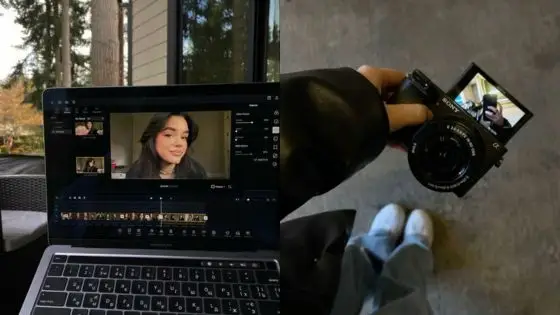
DIY video production Is more than just a trend.
Whether you’re launching a YouTube channel, promoting a business, or documenting your travels, knowing how to produce video content is a skill that pays off in many ways.
But let’s get one thing straight—most “beginner’s guides” to video production don’t cater to absolute beginners. They still require some basic knowledge of filming and editing techniques. This one is different.
You’ll learn practical, actionable, and insider-level techniques that make DIY video production easy, yet exceptionally effective—even if all you have is a smartphone.
Ready to go from “I have no idea what I’m doing” to producing content that actually looks professional? Let’s dive into the steps and video making tips for beginners.
Step 1: The Foundation – What Separates a Boring Video from a Great One?
Before you even think about filming or video editing, you need to understand what makes a video watchable. Here’s the secret:
- A story, not just visuals – Even a 30-second clip should have a purpose. What are you communicating? Why should the viewer care?
- Rhythm and pacing – The difference between a boring video and an engaging one often comes down to timing. Long pauses? Cut them. Awkward silences? Fill them with B-rolls or background music.
- A unique angle – You don’t have to reinvent the wheel, but you should have a fresh take. Instead of another generic “morning routine” vlog, why not show the struggles of getting out of bed? Using tools like Freepik AI video generator can also help you test out visuals and storytelling styles quickly—especially if you’re just getting started and want to experiment without investing in complex editing software.
Exercise: Before recording, write down your video’s main message in one sentence. If you can’t summarize it simply, your video will lack focus. You will probably end up with plenty of new thoughts trying to write a synopsis—write them down, too.
Step 2: Setting Up – Gear Matters, But Not the Way You Think
If you’ve been putting off video production because you “don’t have the right equipment,” let’s bust that myth right now.

Your Camera: Use What You Have, Upgrade When Necessary
- Smartphones are more than enough. Some movies have been shot on iPhones. If you have a recent model, you’re set.
- If upgrading, start with a mirrorless camera. They offer flexibility without the bulk of DSLRs. Great budget options include the Sony ZV-1 or Canon M50.
Audio: The Most Overlooked But Most Important Factor
Bad visuals? People will forgive. Bad audio? Most often an instant turn-off.
- Lavalier (clip-on) mics: Cheap, effective, and perfect for speaking videos.
- Shotgun mics: Ideal for vlogs and cinematic storytelling.
- DIY trick: No mic? Use your phone’s voice recorder, place it close to your mouth, and sync the audio in editing.
Lighting: The Make-or-Break Element of Video Quality
- Natural light = your best friend. Shoot near a window but avoid direct sunlight.
- DIY Light Hack: If you don’t have softbox lights, bounce a desk lamp’s light off a white wall for an instant soft glow.
- LED ring lights are NOT just for influencers. They give a flattering, evenly lit look.
Step 3: Filming Like a Pro – Techniques That Instantly Improve Your Video Quality
Now that your setup is ready, let’s talk actual video production tips. These aren’t some basics like “point and shoot”—you’re about to learn how to make your video look intentional and professional.
Framing & Composition: Where to Place Yourself (or Your Subject)
- Rule of thirds: Instead of placing yourself in the dead center, stay slightly off-center for a balanced frame.
- Depth & layers: Avoid filming against a blank wall. Add depth by placing objects behind you to create a visually appealing shot.
Camera Movement: Avoid Looking Like an Amateur
- Static shots feel lifeless. Even if you’re filming a tutorial, add slow zoom-ins in post-production to create visual interest.
- Handheld? Hold your elbows close to your body. This stabilizes your shot better than stretching your arms out.
- Slow-motion & B-roll: Adds cinematic value and keeps viewers engaged.
How to Talk to the Camera Without Sounding Awkward
- Look at the lens, not the screen. If you keep glancing at yourself, viewers will feel disconnected.
- Talk like you’re speaking to ONE friend. This makes your delivery feel more natural.
- Use hand gestures. People trust speakers who move naturally. Stiffness = unengaging content.


Step 4: Editing – The Secret Sauce of Professional Video Production
Editing isn’t just about cutting clips together—it’s where the real magic happens.
Need software that can easily show you how to change video background with AI? You don’t necessarily have to pay any money or go straight to pro-grade programs.
Mobile apps, cloud-based editors, and plenty of modern desktop software offer more than enough features for most video makers.
As creators progress, understanding how streaming encoder technology works can greatly improve the quality of their live broadcasts and recorded content. These tools help stabilize video, manage bandwidth, and deliver cleaner output—giving beginners more professional-looking results without complex setups.
Editing Techniques You Should Use Immediately
- Jump cuts: Cut out long pauses to keep the pacing fast and engaging. But use them purposefully; otherwise, the video will look jarring.
- Color correction: Adjust brightness, contrast, and saturation for a polished look.
- Sound mixing: Balance background music and voice so neither overpowers the other.
Adding Captions & Graphics: The Engagement Booster
- 92% of people watch videos on mute. Adding subtitles ensures your message is still understood (keep in mind the typography)
- Motion graphics & text overlays: Emphasize key points to make your video more dynamic.


Step 5: Publishing & Growth – How to Make Your DIY Videos Get Noticed
So, you’ve shot and edited your masterpiece. Now what?
Export Settings: Don’t Let Compression Ruin Your Work
- Format: MP4 (for the best balance of quality & file size)
- Resolution: Always export at 1080p at a minimum
- Bitrate: Higher = better quality, but bigger file sizes
Where to Publish & How to Get Views
- YouTube
- Instagram/TikTok
- Facebook/LinkedIn
Promote Your Video Like a Pro
- Engage in the first hour. The more interactions you get right away, the better your video ranks.
- Repurpose Content. Cut snippets from your video and turn them into Instagram Reels or TikToks.
- Collaborate with others. Cross-promoting with creators in your niche expands your reach.
What’s Next in Your Video Production Journey?
Starting DIY video production is both about making content and learning how to tell compelling stories. As you keep filming, you’ll develop your own style and voice.
So, what’s stopping you? You don’t need the best camera, a fancy studio, or years of experience.
- 0shares
- Facebook0
- Pinterest0
- Twitter0


